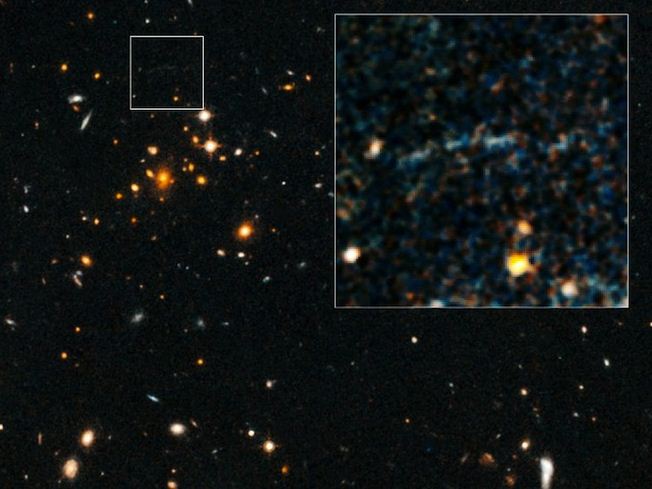
Astronomers have witnessed one of the rarest and most extreme galaxy clusters in the universe! That’s not all; behind it, they have found an object that ought not exist!
cisco 700-505
Using NASA’s Hubble Space Telescope, cosmologists have uncovered an extremely massive cluster of galaxies existing 10 billion light-years away and behind them, an obscure arc of light. The galactic cluster that had been uncovered by NASA’s Spitzer Space Telescope, formed during an era when the universe was a quarter of its existing age of 13.7 billion years.
The humongous arc is the expanded shape of a more remote galaxy whose light is tarnished by the powerful gravity of this huge cluster; this is an effect called “gravitational lensing”. In case you’re wondering what galaxy clusters actually are, well they are collections of galaxies that orbit one another and are the most massive objects in the universe. What is troubling though is the fact that this arc should not exist in the first place.
“When I first saw it, I kept staring at it, thinking it would go away,” said study leader Anthony Gonzalez of the University of Florida in Gainesville, whose team includes researchers from NASA’s Jet Propulsion Laboratory, Pasadena, Calif. “According to a statistical analysis, arcs should be extremely rare at that distance. At that early epoch, the expectation is that there are not enough galaxies behind the cluster bright enough to be seen, even if they were ‘lensed,’ or distorted by the cluster. The other problem is that galaxy clusters become less massive the further back in time you go. So it’s more difficult to find a cluster with enough mass to be a good lens for gravitationally bending the light from a distant galaxy.”
The latest uncovered cluster, named IDCS J1426.5+3508, is extraordinary because during this period in cosmic history, massive collections of galaxies were just starting to formulate. There has been only one other cluster of comparable size, spotted at such distance, but its weight is light when measured to the latest cluster.
What’s even more ambiguous and puzzling about this new found galaxy is the bizarre arc of blue light spotted right behind it. Astronomers believe this is an indication of yet another huge star-forming galaxy located further away at an even earlier era.
Astronomers aspire to comprehend how these objects came to exist in order to designate the actual history of galactic evolution. An x-ray telescope that is scheduled to launch the upcoming year (called eRosita mission) might bring the team answers and information about these peculiar findings.
For more on this story, check here.
![]()

Looking for a simple, elegant backup solution?
Genie Timeline 2012 is a new version of the number one continuous data protection program Timeline 2.1. It offers the first metro style user interface; enhanced performance, and added features. Like us on Facebook and Follow us on Twitter for the latest news.
>Follow @Genie9backup
![]()
